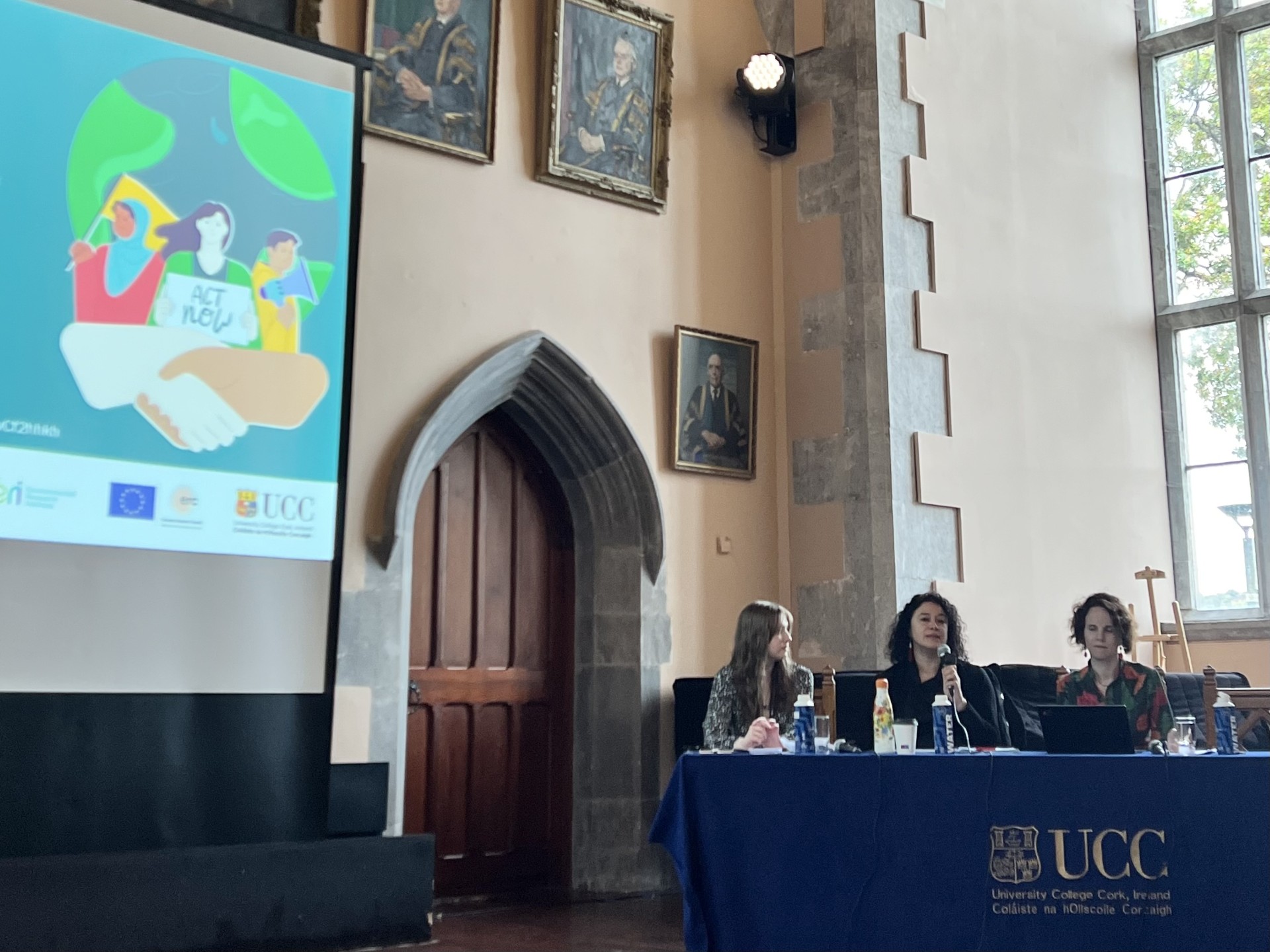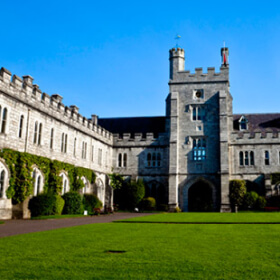Blog
Making Dreams A Reality - Including Young People In The Conversation Around Their Own Future

Niamh Purcell, young climate activist, reflects on children's right to participation under the UNCRC.
In 1992, the United Nations Convention on the Rights of the Child was signed for the very first time, and as of today, 196 States have become a member of this crucial tool for the implementation of children’s rights. The UNCRC outlines many of the things that children require to survive and thrive, ranging from food and water, a safe place to live, and protection from conflict, to quality education - but in a world where we are experiencing unprecedented changes to the very fabric of our civilisation, surely their rights have to go beyond basic needs, to including their voices in social and civic spaces where pressing social issues are discussed?
Traditionally, children’s rights have always been implemented by adults in the way(s) that they see fit, oftentimes just merely tokenistically. Children and young people have had to rely on those around them to take their rights seriously, and to carry through their ideas and opinions - but lately, we have seen a major change in the way children's rights are honoured. Instead of being passive participants in the context of human rights, young people have been taking the lead in many social justice spaces, and no longer appear to be waiting for grown-ups to ask for their points of view: they are simply including themselves, regardless of the circumstances around them. The climate justice movement, however, seems to be the space where this is occurring most, and interestingly so.
As the future of the world hangs in peril, young people are well aware that they are the ones who will have to deal with the most catastrophic, and the most unknown, effects of climate change as they transition into adulthood. As the climate crisis has dragged on for decades, and young people have continuously seen inadequate effective action being taken, they have decided to take charge of the narrative surrounding youth climate justice, and not only fight for, but implement, their own solutions. This is what we call “post-paternalism” - where young people no longer feel the need to pause for adults to take control of the social situations and conditions that affect them, but instead, feel empowered enough to do so by themselves.
As of 2023, 25% of the global population was made up of young people aged under 18, which is a vastly disproportionate amount of citizens that suffer from underrepresentation. The increasing frustration of young people at not being actively involved in issues that directly affect their own future has led to a sudden boom in child advocacy and activism. Thousands of students have taken to the streets in protests like Fridays for Future, demanding quick and effective action in relation to the biggest global crisis humanity has ever faced. Others have joined, or even set up their own, charities and organisations in an effort to spread awareness and facilitate collective action. And then, there are a select few who are pioneering in the climate justice movement, with youth plaintiff legal cases such as Juliana v United States, or participation in new projects such as climate assemblies, on the increase.
Indeed, there have been changes in the United Nations Convention on the Rights of the Child (UNCRC) itself to recognise youth social justice as a pressing issue, and to facilitate the direct involvement of young people in the address of social inequalities, which is reflective of the growing numbers of young people dissatisfied with the traditional underrepresentation of their voice - and this is a particularly important breakthrough in the youth climate justice space. As a young person with a number of years’ experience in climate justice advocacy, I feel that the inclusion of three articles in particular was crucial to the success of post-paternalism, which are as follows:
- Article 3: Making Rights Real
- Article 12: Respect for Children's Views
- Article 24: Health, Water, Food & Environment
Combining these three articles together under one framework means that a.) effective climate action must be taken in order for children’s rights to be protected, b.) children must be taken into consideration when taking that action, and c.) they have the right to represent themselves in those spaces, and for their ideas and opinions to not only be actively sought after and listened to, but also implemented.
When applied to the climate justice space, however, often we are left wondering how the implementation of young people can be made meaningful. The enactment of such an important convention cannot be allowed to be tokenistic - as such, there would be no point in having it. At the same time, the involvement of young people in finding solutions to the climate crisis is absolutely crucial, which is why, following the new trend of post-paternalism we are seeing, more and more young people are taking matters into their own hands. We are seeing a huge increase in the number of young people implementing their own rights to participation and for their opinions to be given due weight, rather than waiting for adults to include them or ask for their input (as has been the traditional approach).
Oftentimes, I feel that adults find themselves wondering exactly how this concept of post-paternalism came about - it’s such a huge change from traditional concepts surrounding youth participation. As a young person, for the last four years I have observed a rather concerning trend in a considerable number of adults working in the youth justice space, where the consideration of children's opinions is almost about ticking a box to say that it’s been done. Instead of being implemented in a meaningful way, children’s views and ideas have been allowed to be seen as “tokenistic”, and not necessarily a crucial part of the solution to social justice issues. This belief in the lack of impact associated with the voice of youth has been a major barrier in terms of the meaningful implementation of children’s rights, and is particularly dangerous in the context of climate change, an issue that will affect children for generations to come. However, it has also served as a driving force behind this surge of post-paternalistic tendency we’re seeing: children are determined to prove that the solutions they offer are just as, if not more, impactful.
So, when considering the insurance of meaningful contributions from and for every child, but also the safe inclusion of children, how can we cover all bases? It can often seem like we can’t include young people in an impactful way without potentially leaving them vulnerable to distressing situations, but excluding them from social and civic spaces violates their rights to participation - so, what does one do? Based on my own personal experience, I find that a significantly underrated method for the impactful inclusion of the voice of young people in a safe, but meaningful, manner is deliberative democracy, particularly where a CRC-based approach is taken. A wonderful example of the meaningful implementation of deliberative democracy, particularly for young people, is through citizens assemblies.
Deliberative democracy follows three basic principles: information, discussion, and decision-making. In the first stage of the process, participants are supplied with a variety of dissimilar forms of information, for example through lectures, videos, presentations, and tactile research. In the context of citizens assemblies, this information is tailored to provide someone with no prior knowledge of the respective social issue a reasonably high standard of education about the topic, ensuring that participation in assemblies can be open to all citizens within any given society. In the second stage, participants will discuss the information that has been presented to them with each other, putting forward the opinions and ideas they have formed, and listening to each others’ points of view. This stage is crucial for the success of the final stage, where the group of participants will come together, and decide on what action they as a group feel should be taken. In the context of citizens assemblies, this will often come in the form of a final report that consists of “Calls-to-Action”, which is then submitted to a group of decision-makers, such as a government. Additionally, citizens assemblies generally must be “representative of the population”, meaning that all citizens, of any age, race, ethnicity and background, should be proportionally portrayed by the assembly participants.
In 2022, Ireland hosted a project of this exact kind for young people, aged 7-17, and it worked fantastically well. The assembly had 35 children and young people from all across the country come together to speak about biodiversity loss, and what measures they felt needed to be implemented for Irish biodiversity to be not only preserved, but enhanced. The Youth Assembly submitted 58 Calls-to-Action to the Irish Government, many of which were reflected in Ireland’s most recent National Biodiversity Action Plan, and all of which were presented by a delegation of the youth Assembly Members at the Oireachtas in Ireland. Interestingly, the Youth Assembly ran alongside an Adults’ Citizens Assembly on the same topic, therefore the two were able to integrate quite well, to the point where the Adults’ Assembly requested in their own Final Report that the Youth Assembly be taken seriously.
The Children and Young People’s Assembly has continued to have impact to date - just recently, I myself was involved in facilitating an international discussion with some of our Assembly members about the influence they feel they have had through the project. The Irish Children and Young People’s Assembly on Biodiversity Loss is just one example of the awe-striking impact that children can have when they are simply given the opportunity, and space, to use their voices - let me assure you, there are many more examples of such projects. As an Irish activist, to see my home country holding youth participation so close to its heart is comforting, and empowering - and if I have anything to say about it, this will only continue!
If there’s one thing I want you to take away from this article, it’s this: young people can make change, they have made change, and they will continue to make change. They will do it regardless of if, how and when adults implement their rights to participate - they recognise the future as their own, and are beginning to treat them as such. However, how we truly want that future to look can be reflected in how adults implement their rights to youth participation, and how we ensure that youth climate justice is held close to our hearts, across all sections of society. The United Nations Convention on the Rights of the Child hands our youth the right, the faith and the ability to defend their own rights, and to fight for their own future. I would argue that any nation that has signed the UNCRC has done so as an act of faith in our youth’s ability to lead.
So surely it’s time that everyone, everywhere, gets behind that faith?

